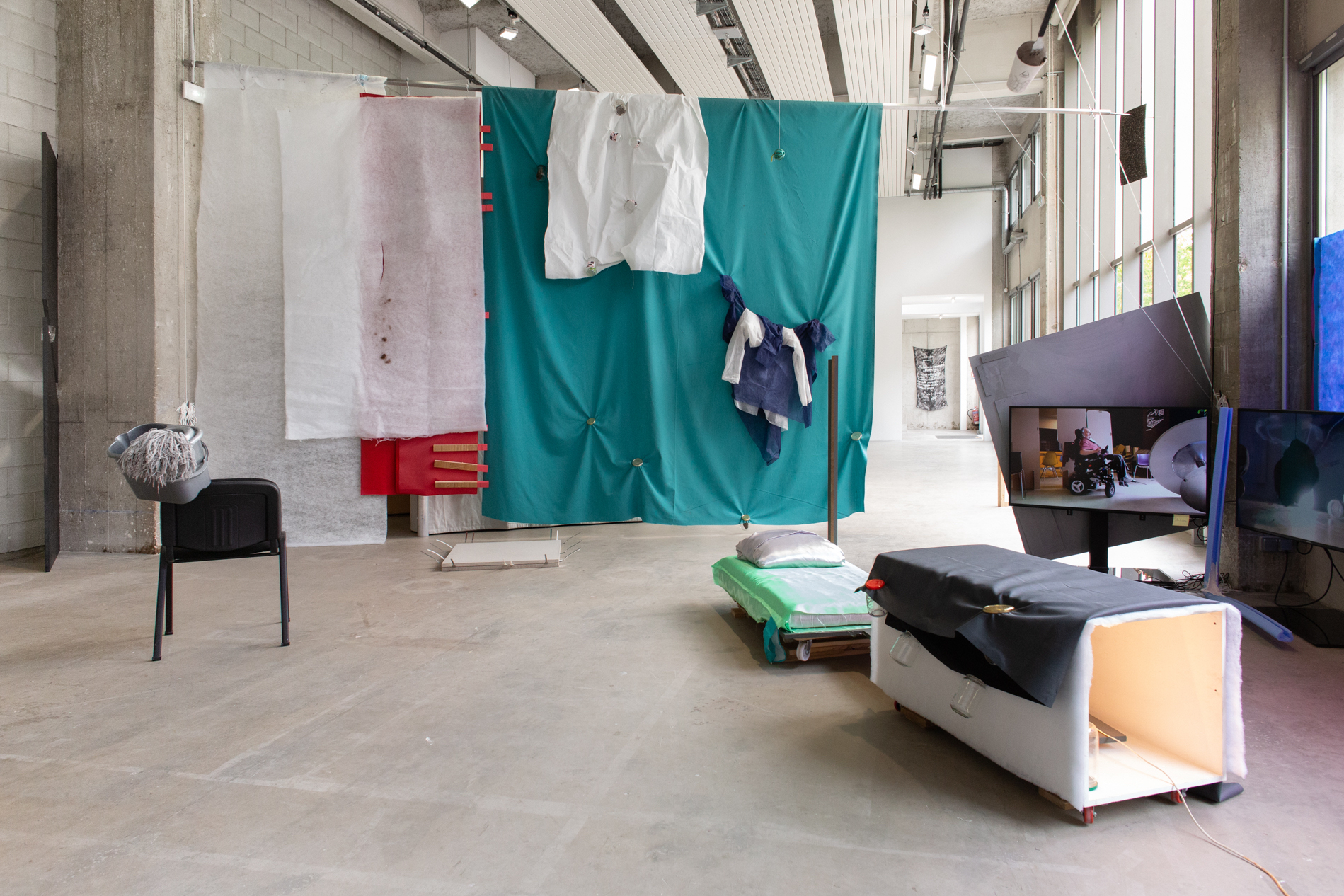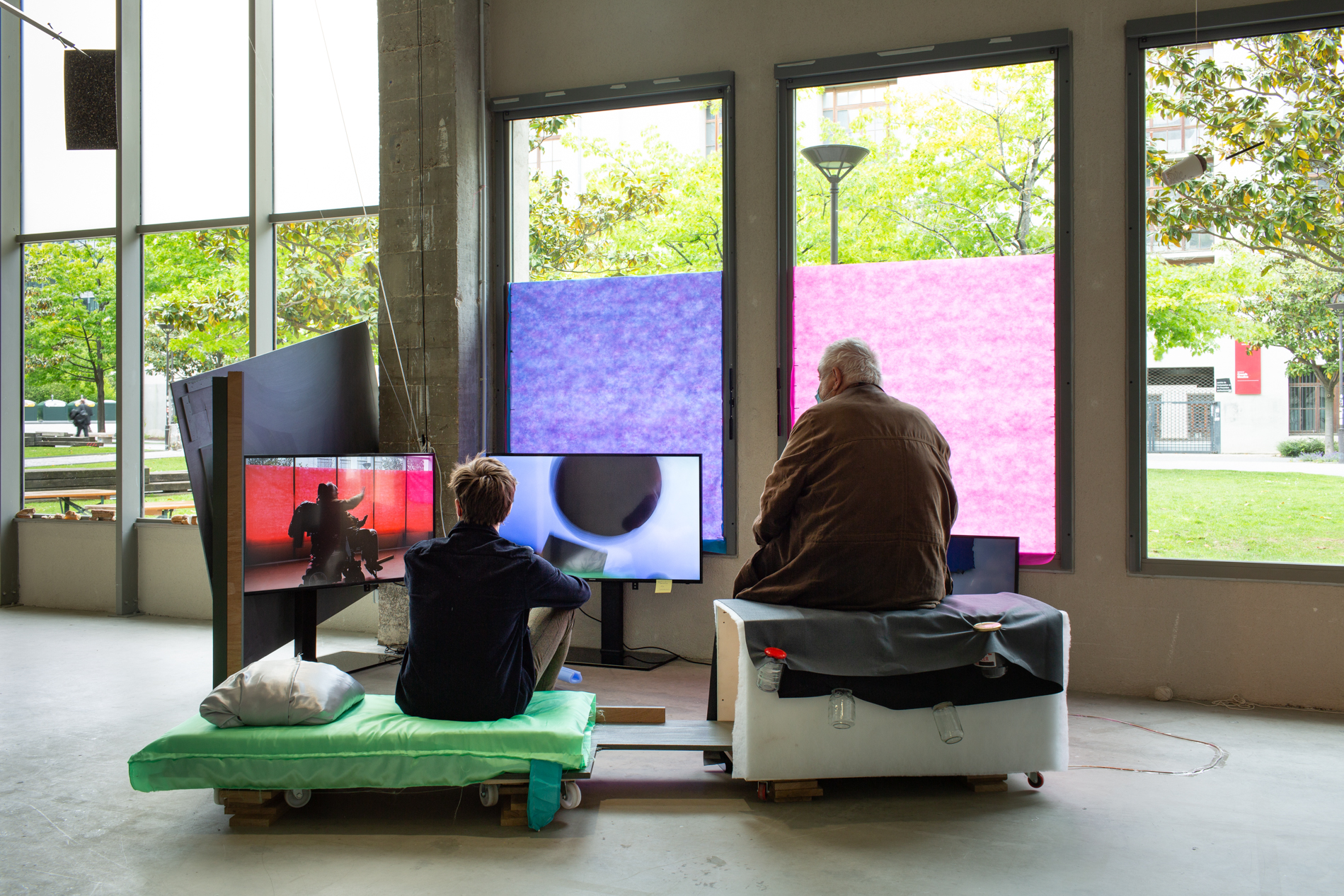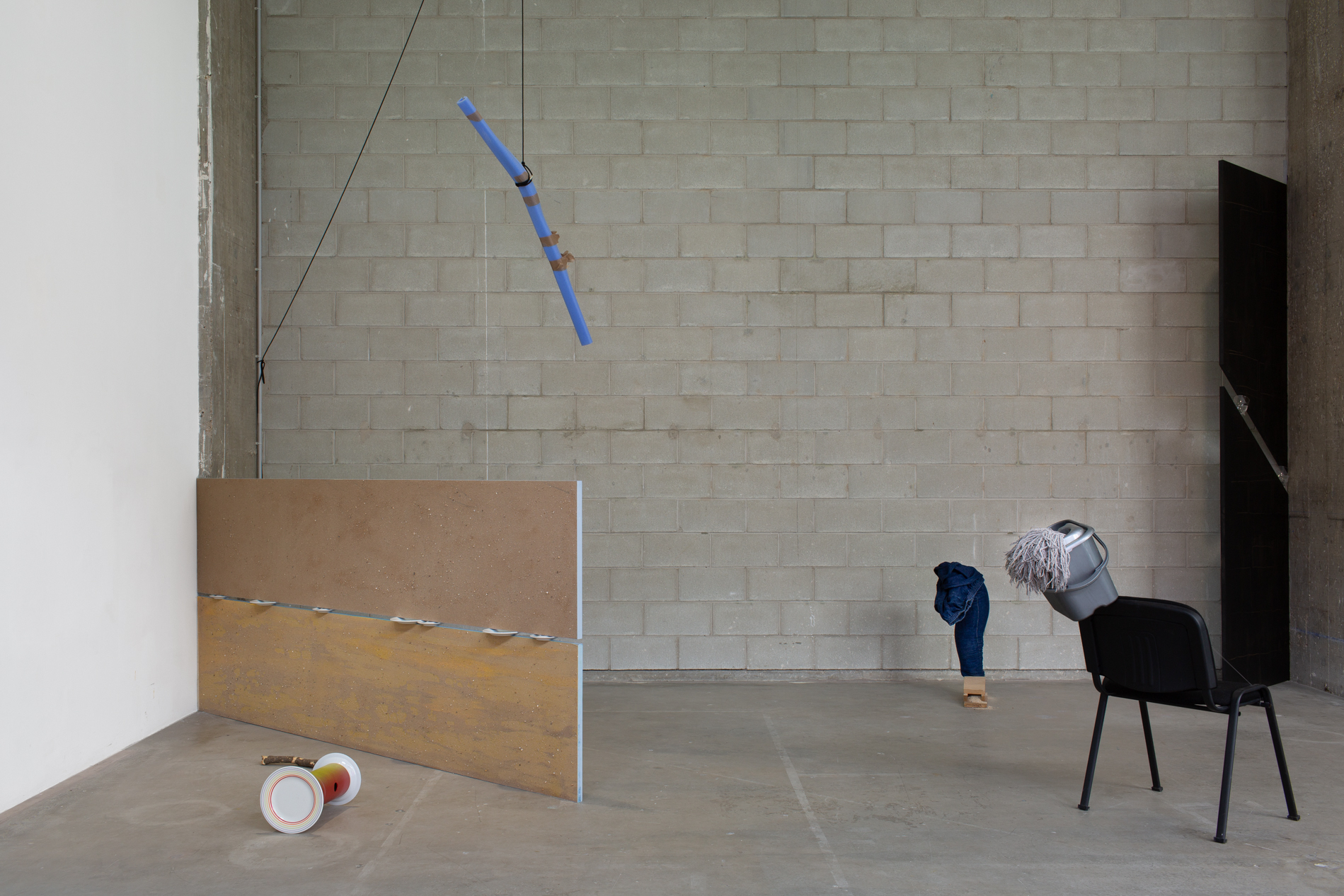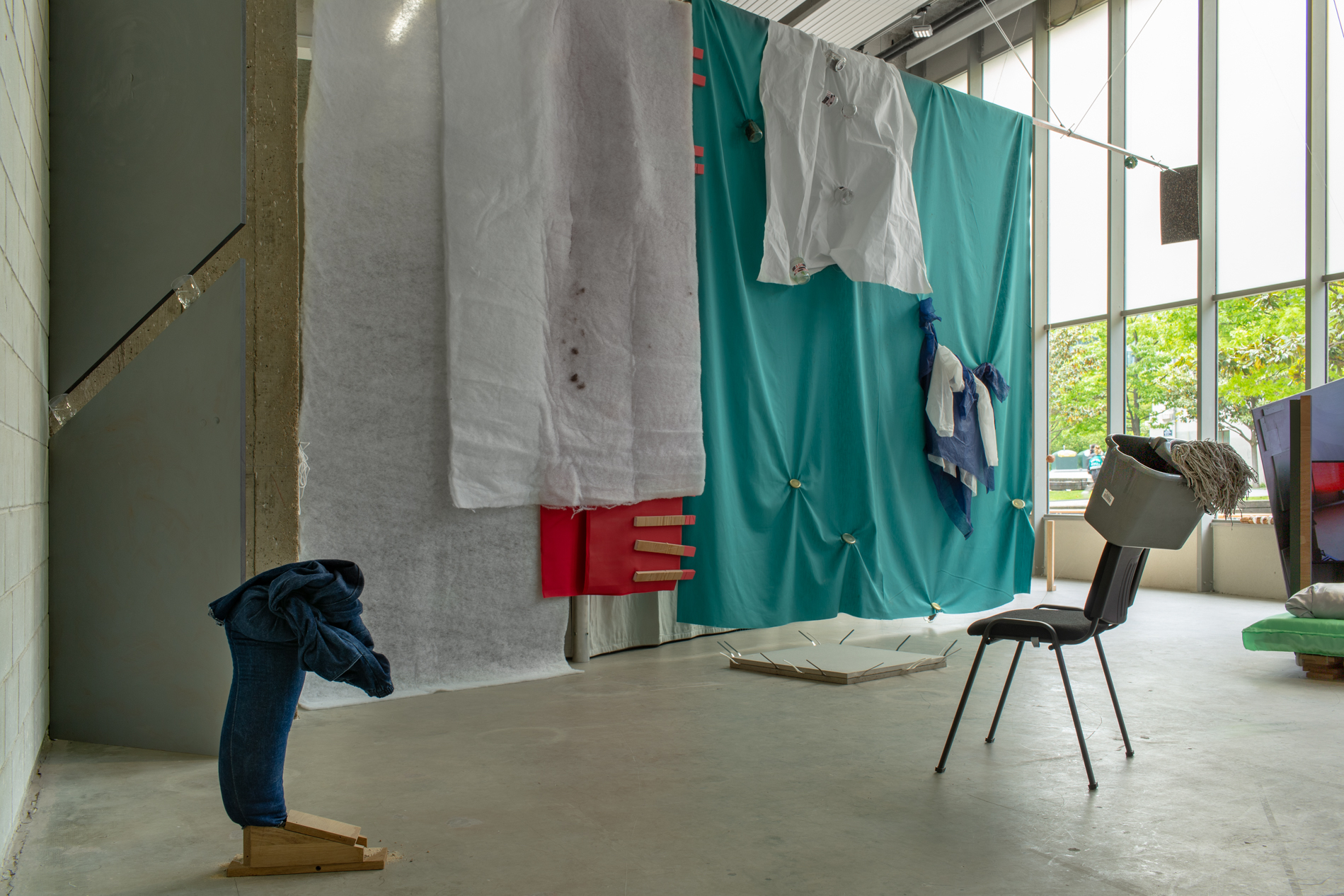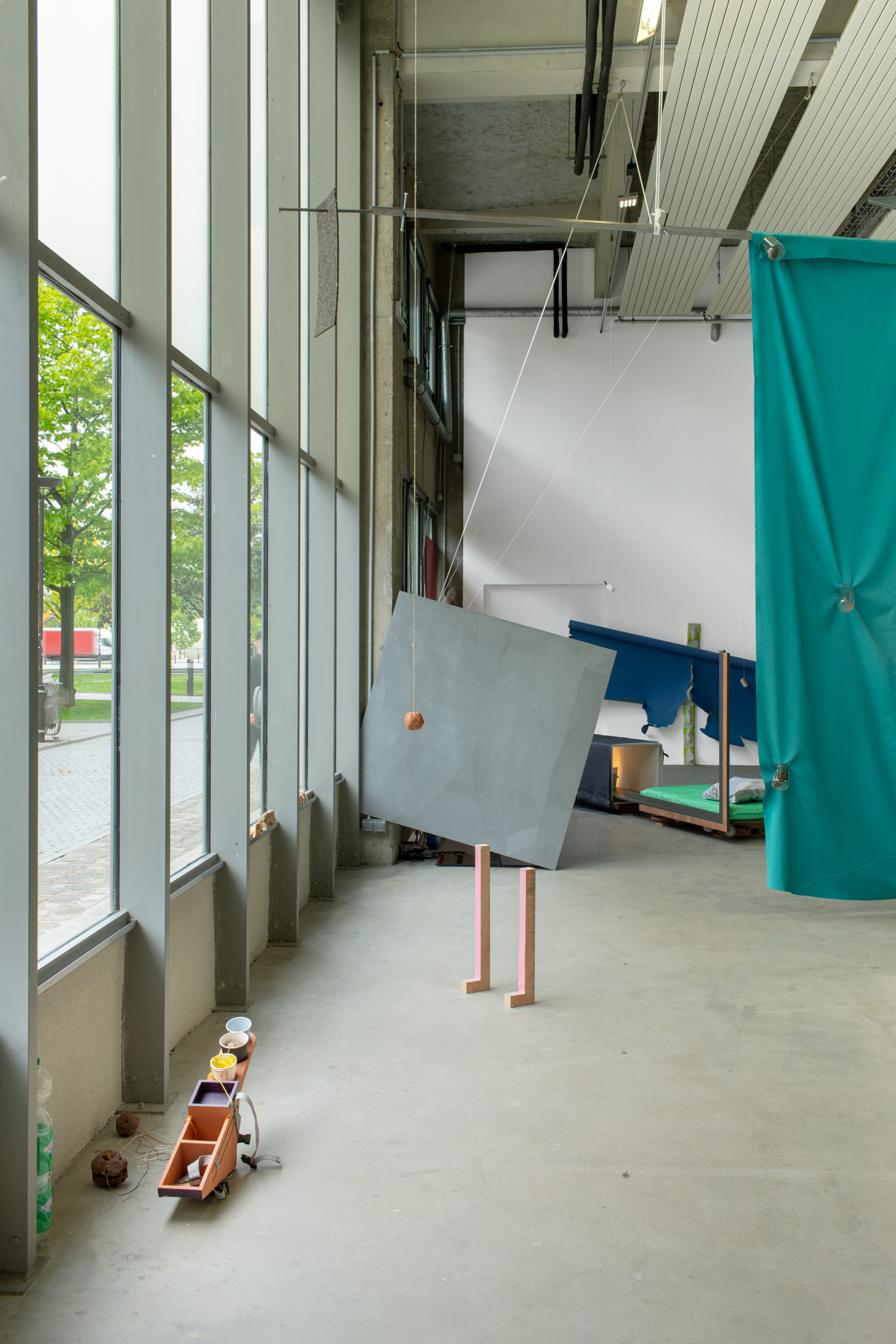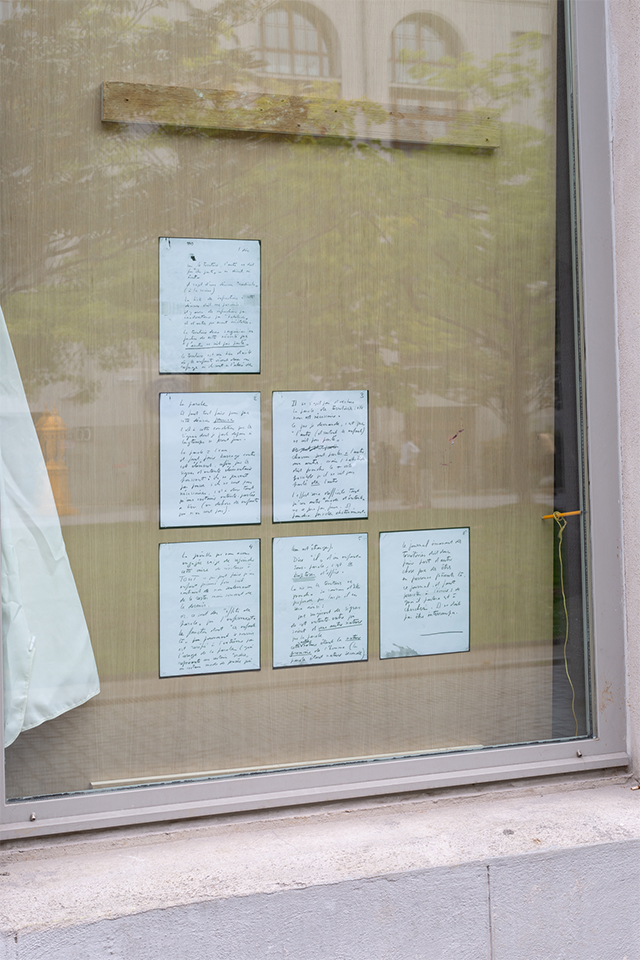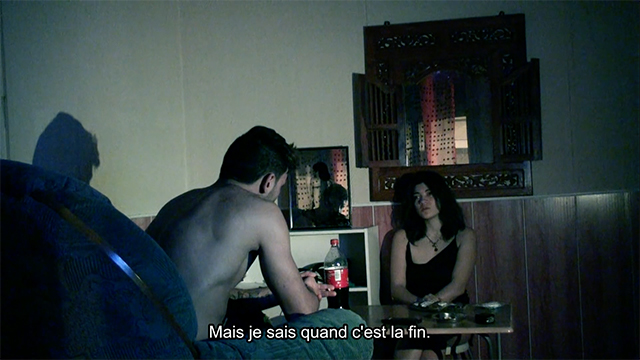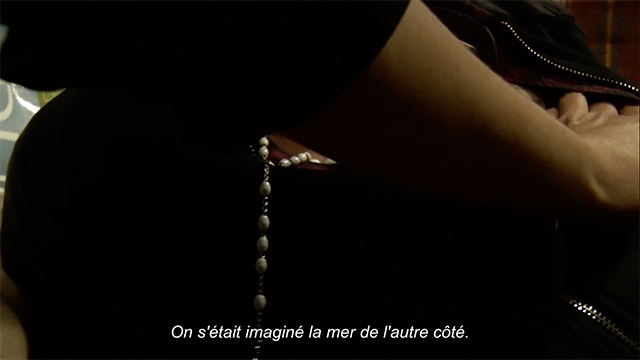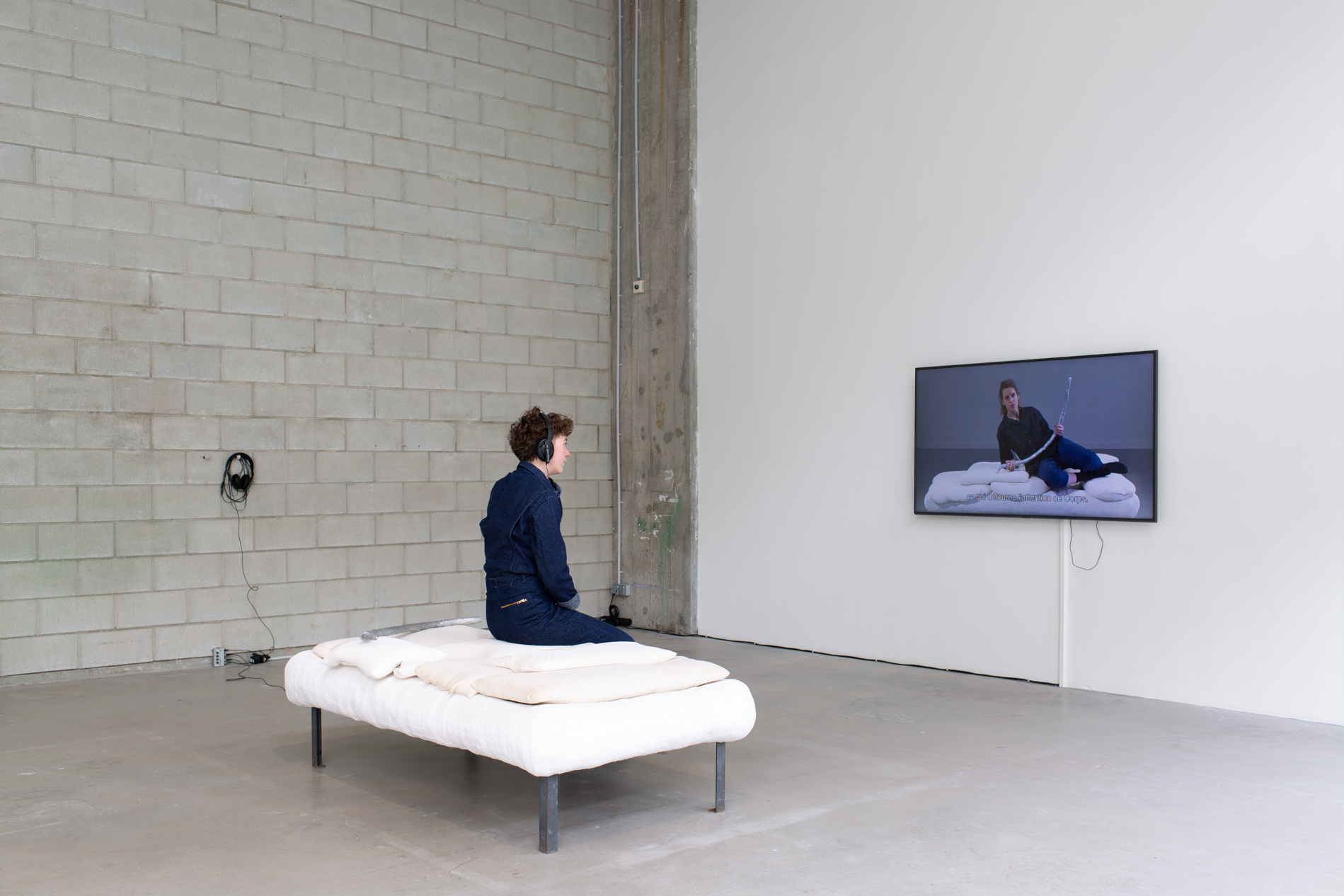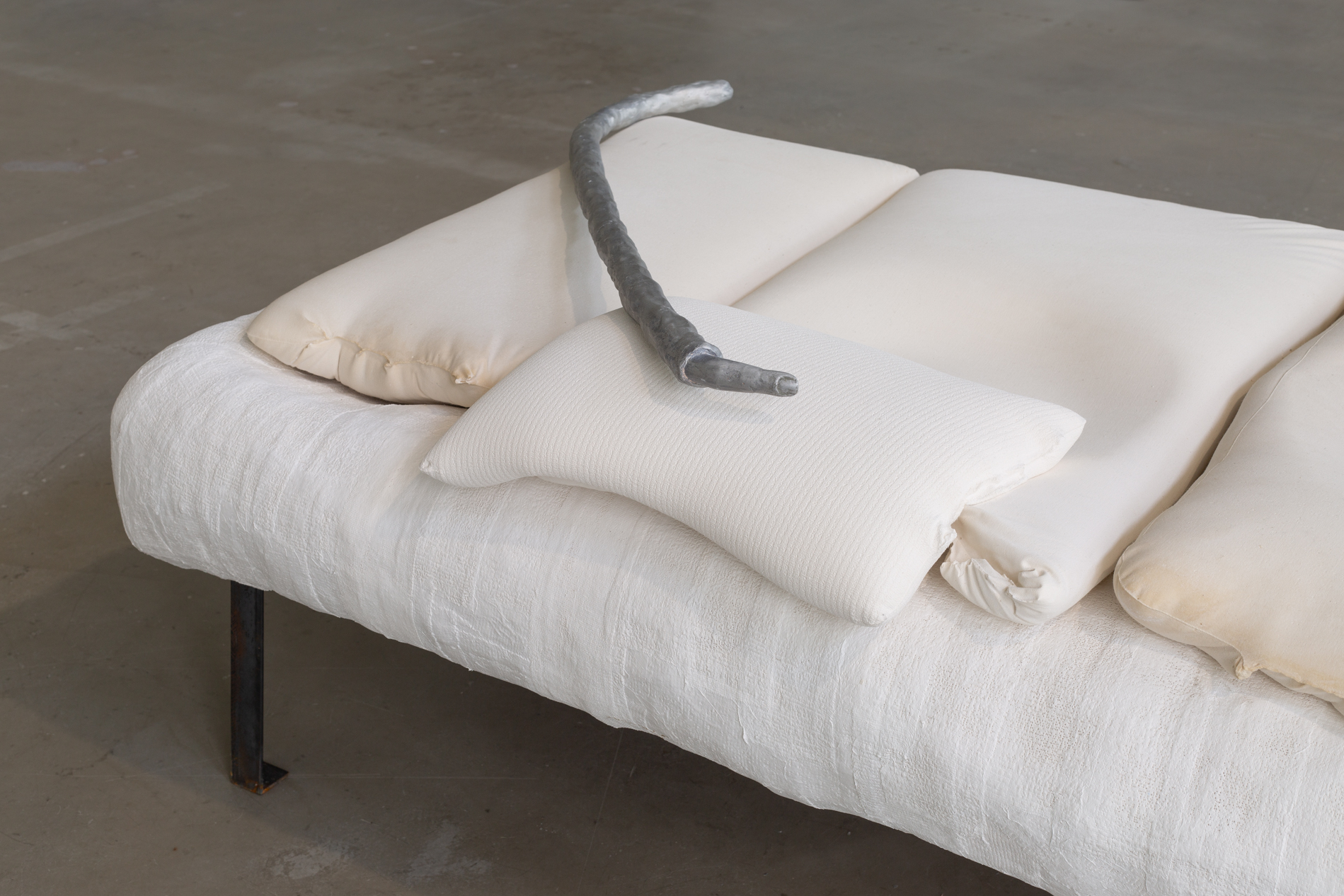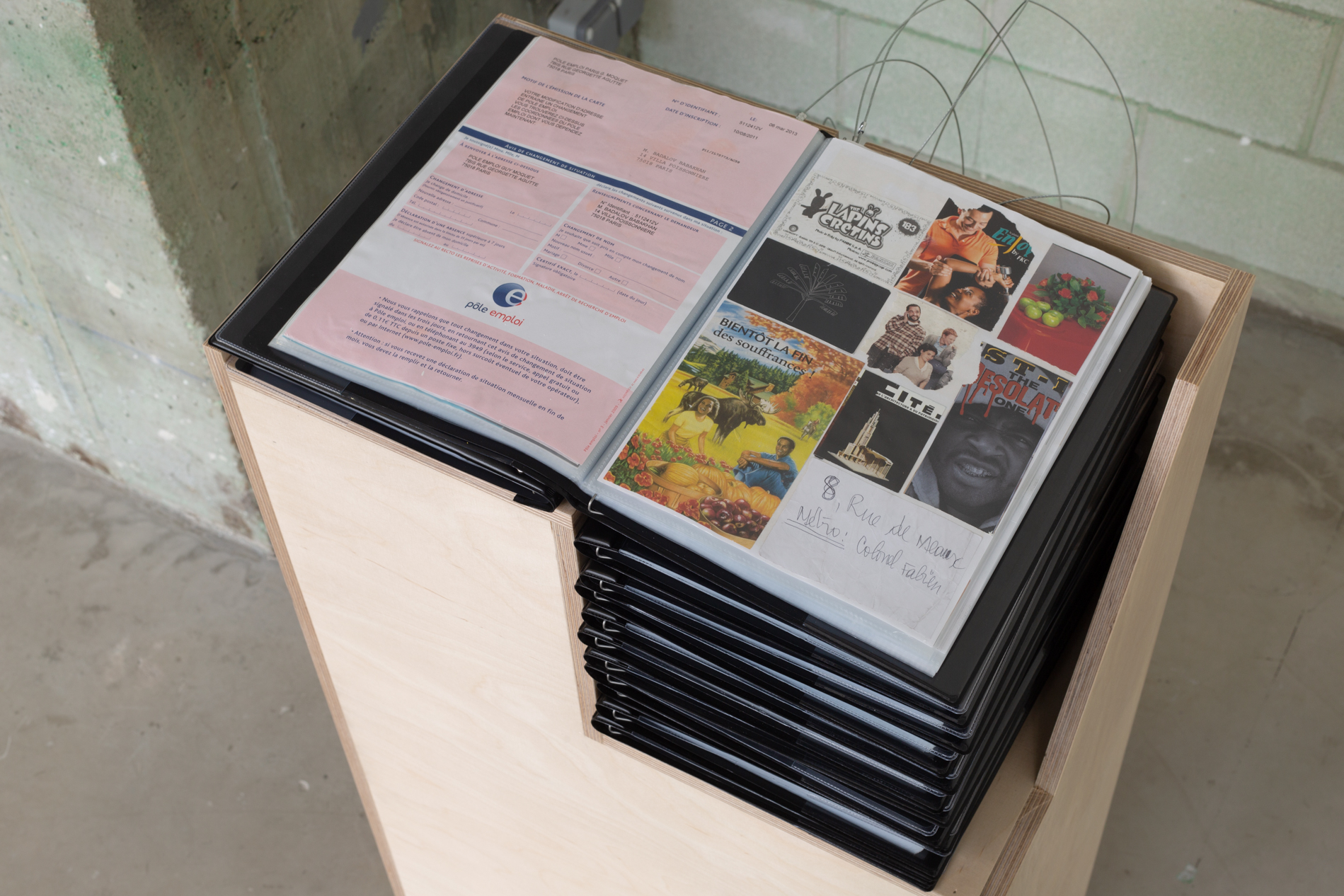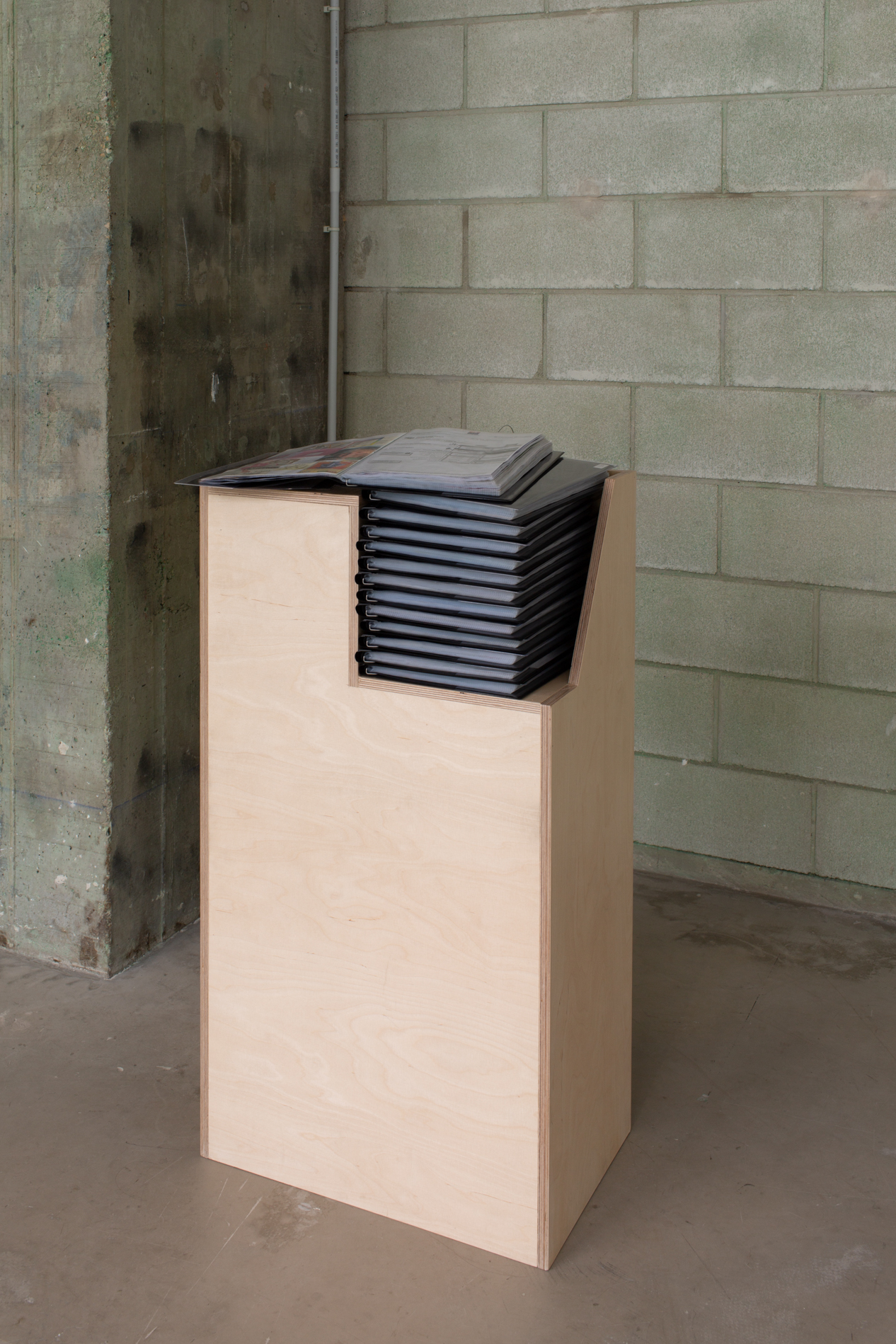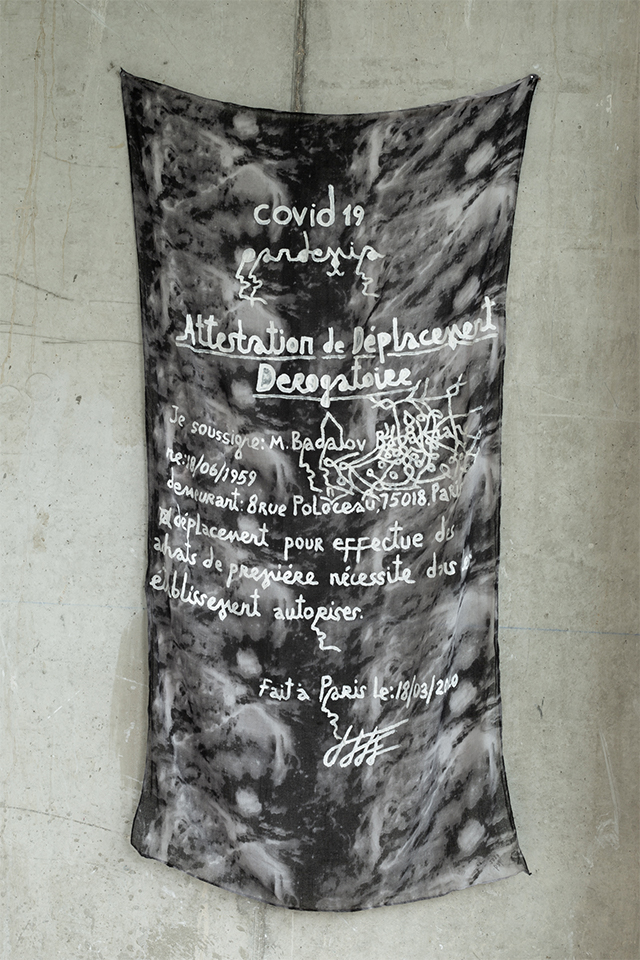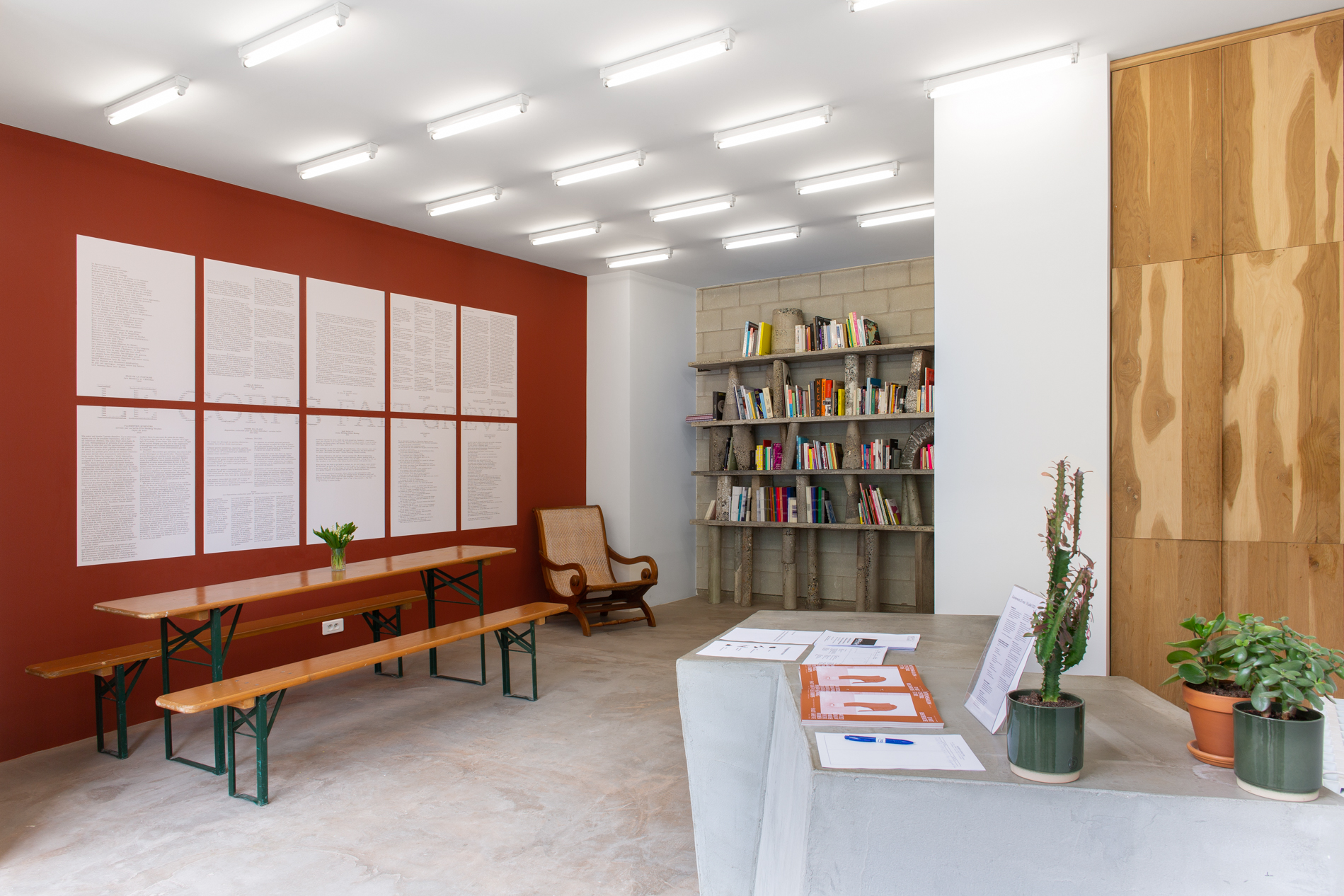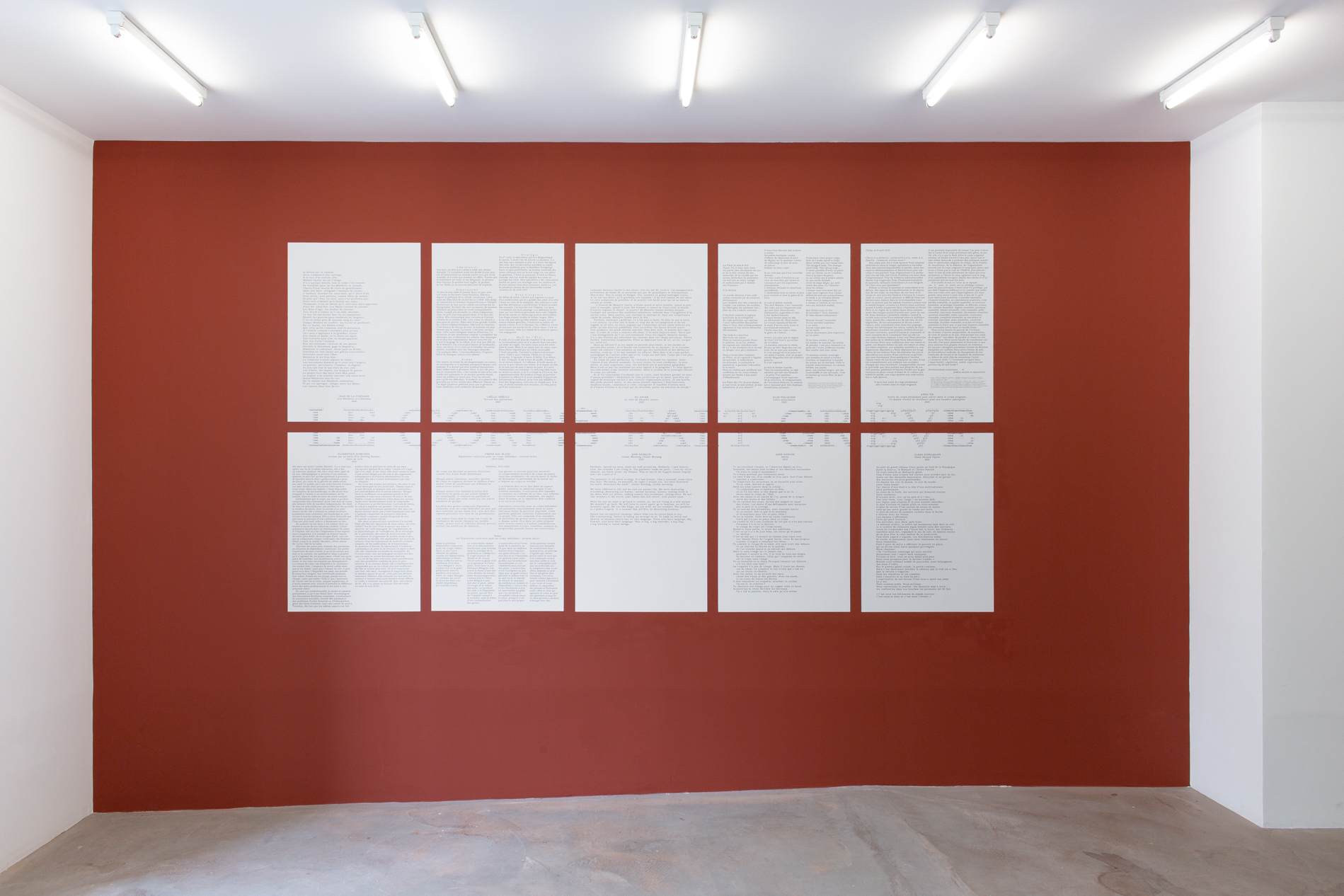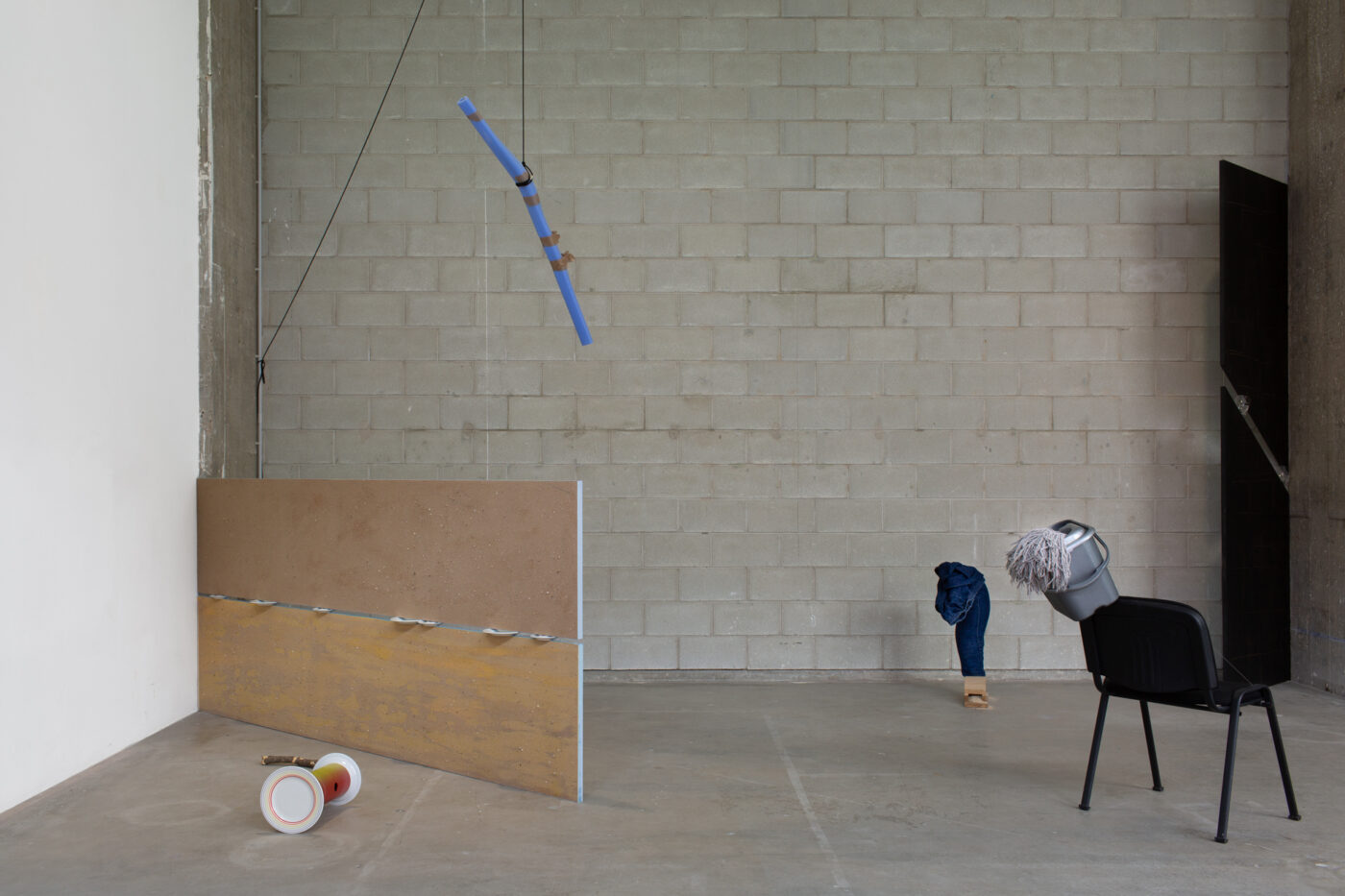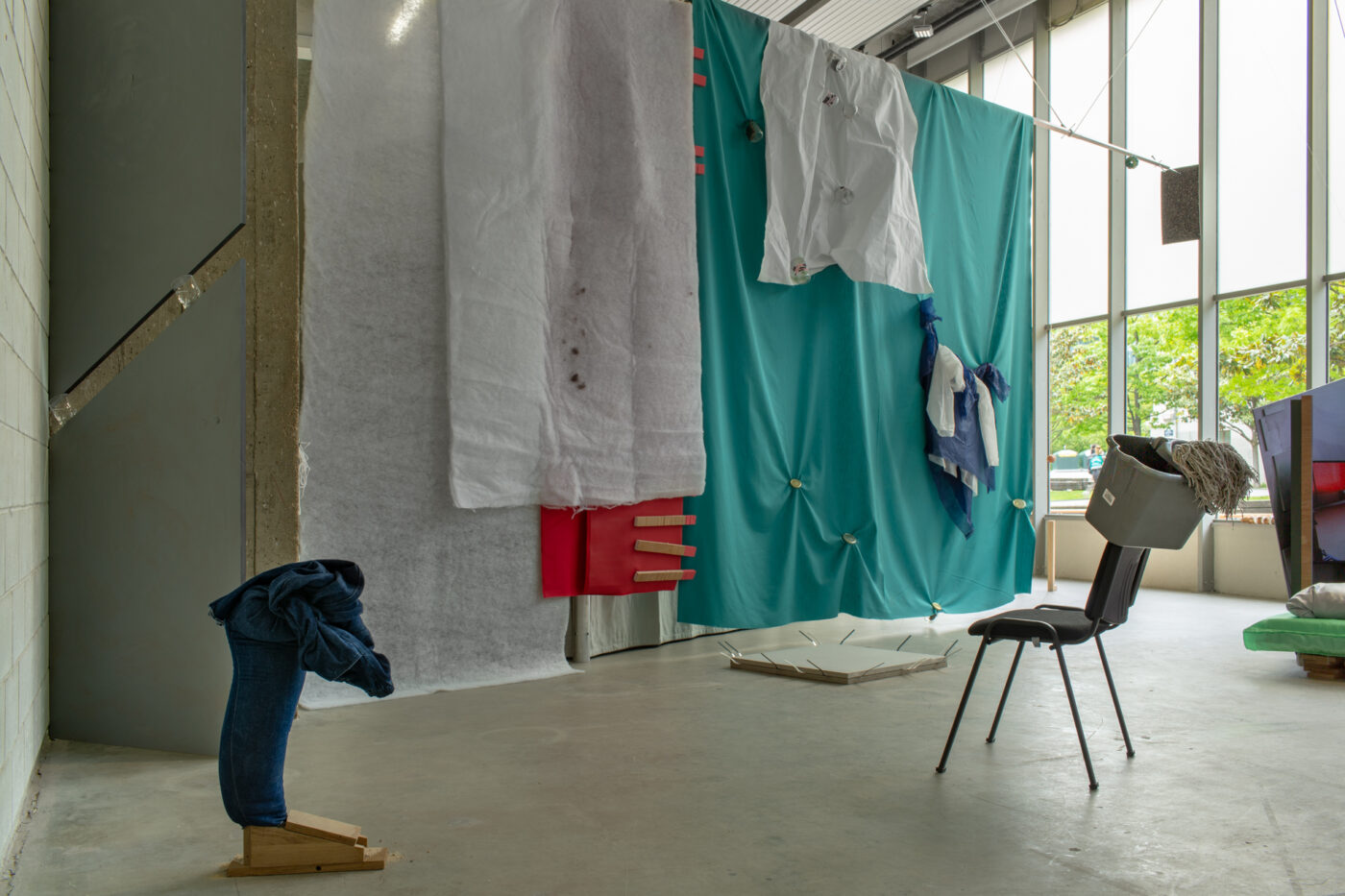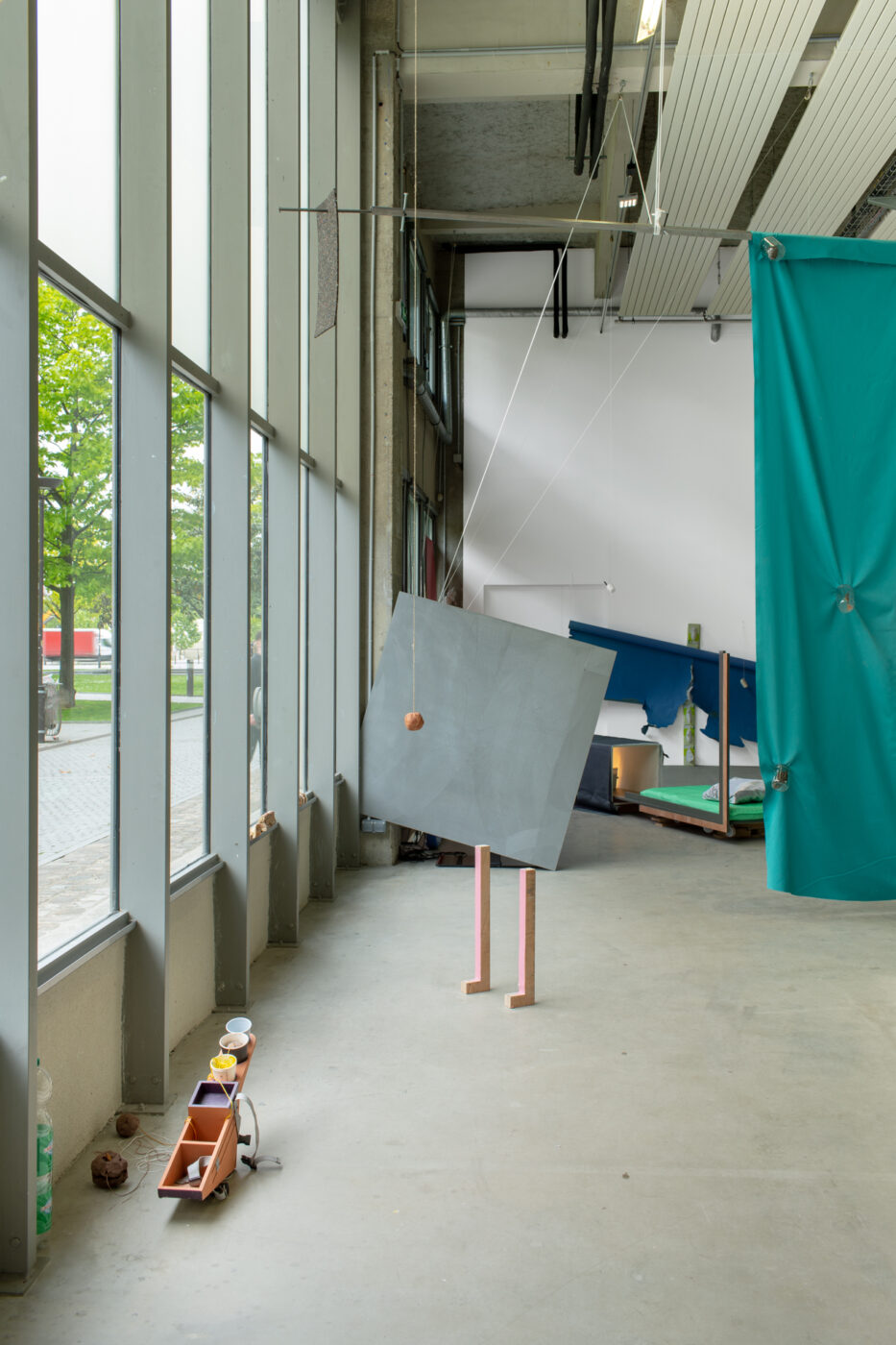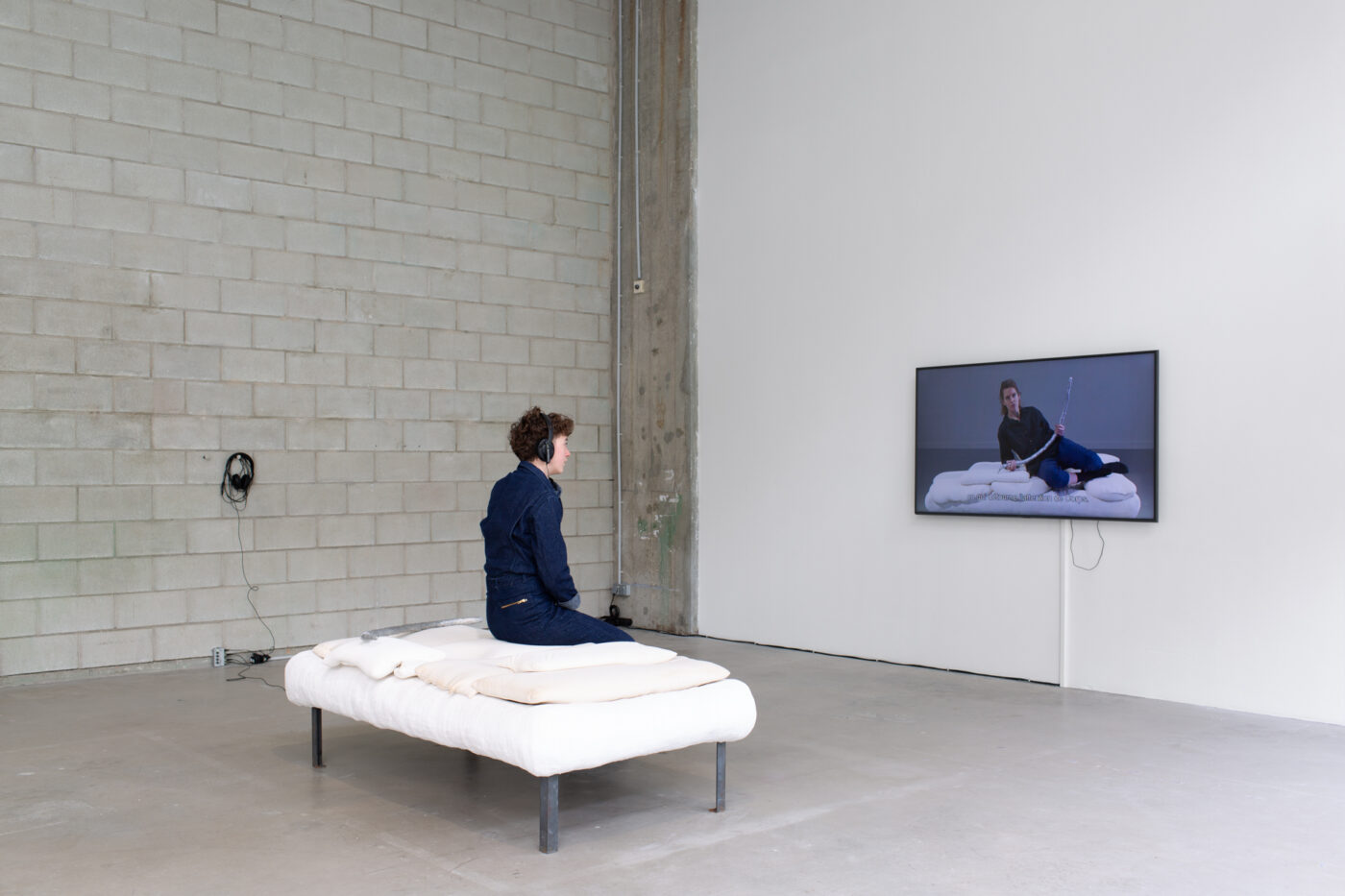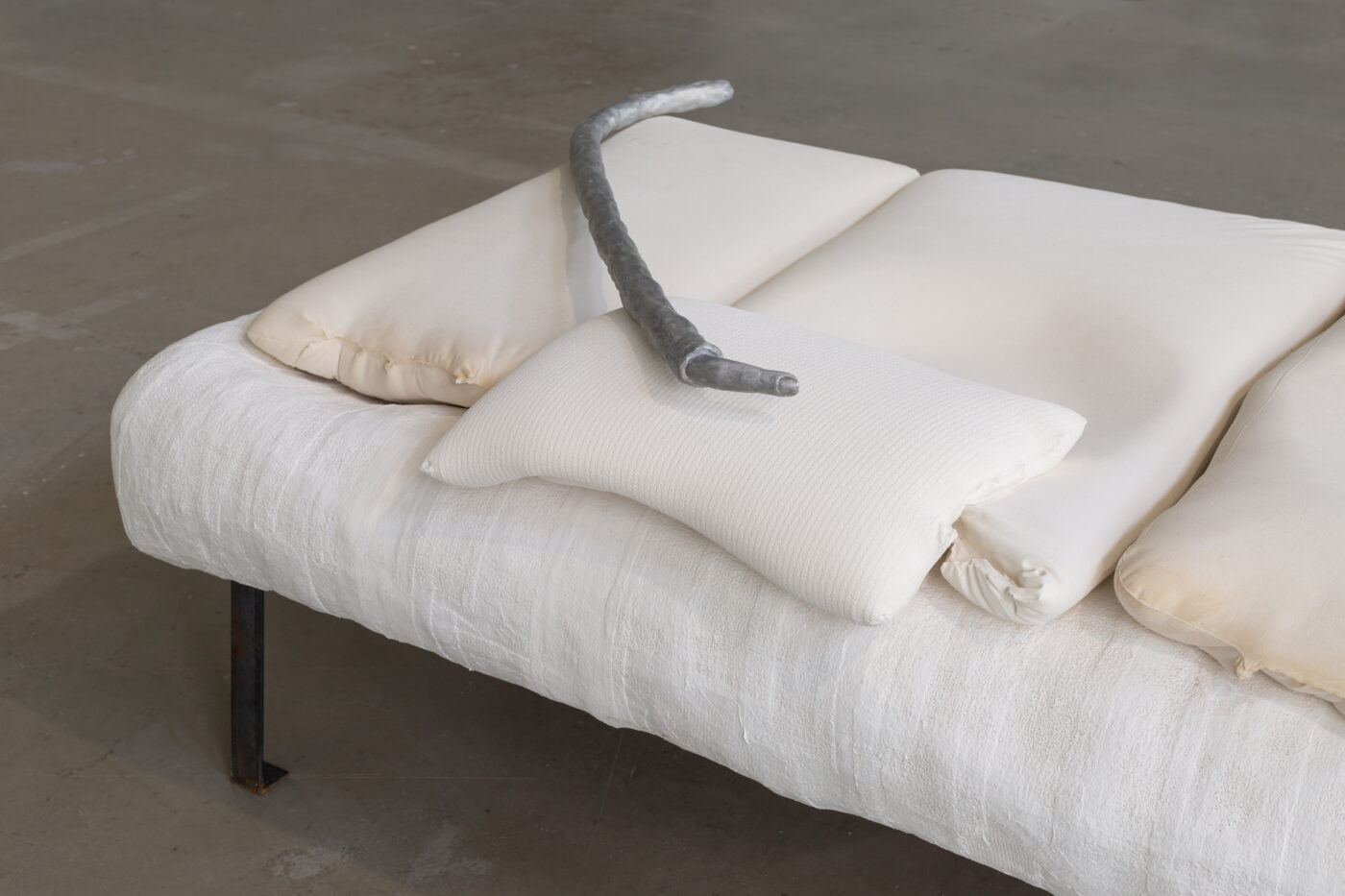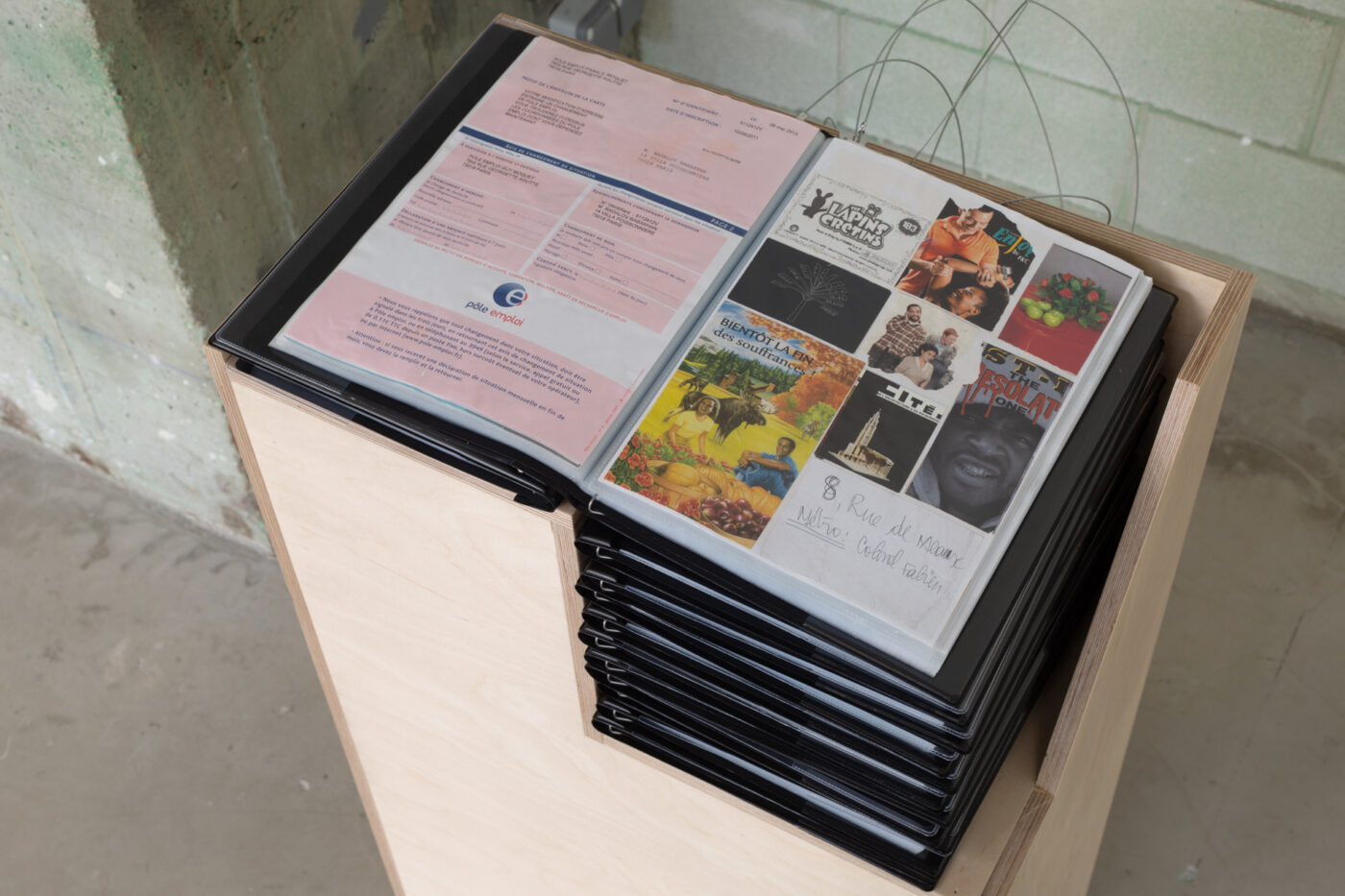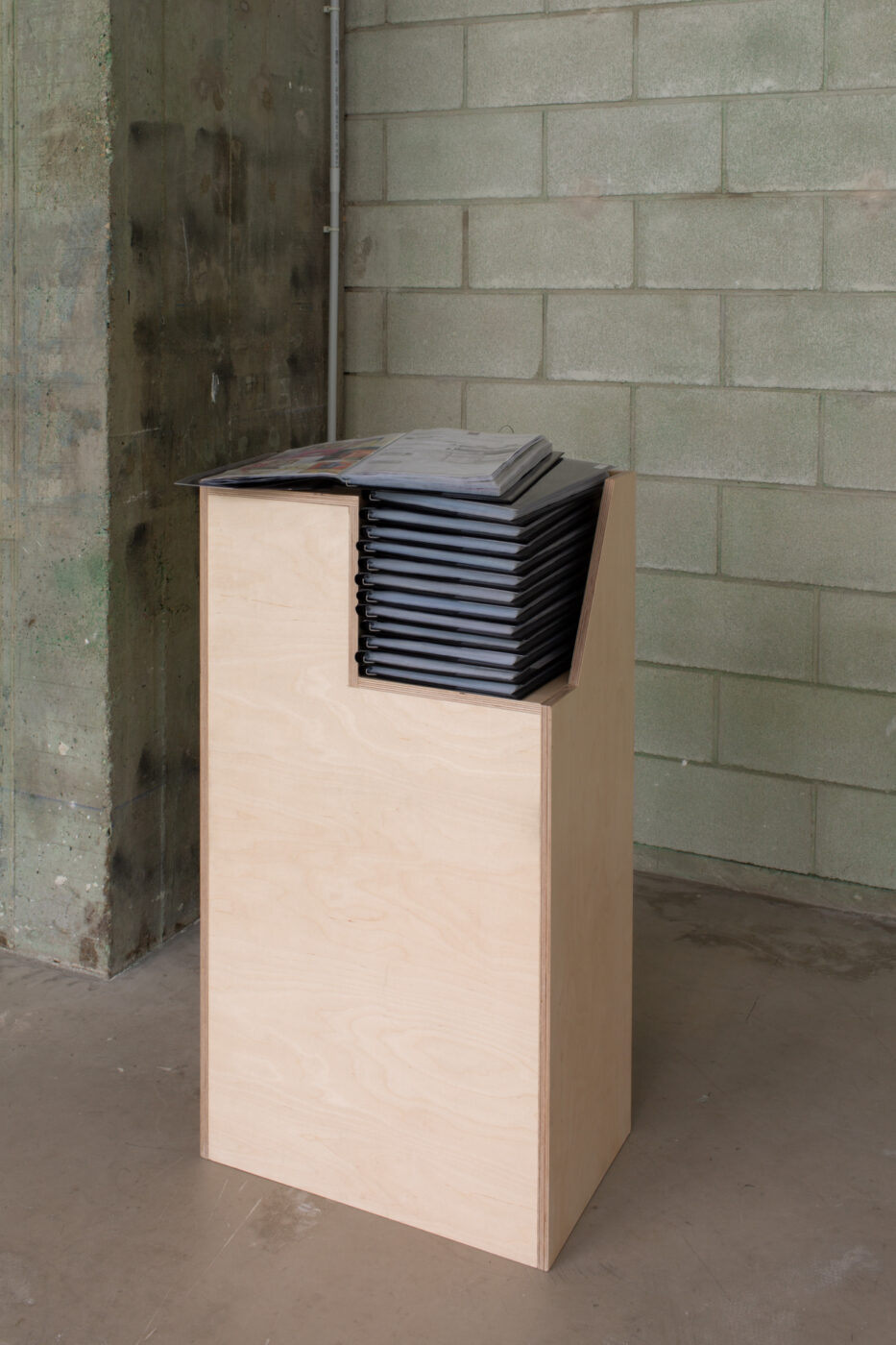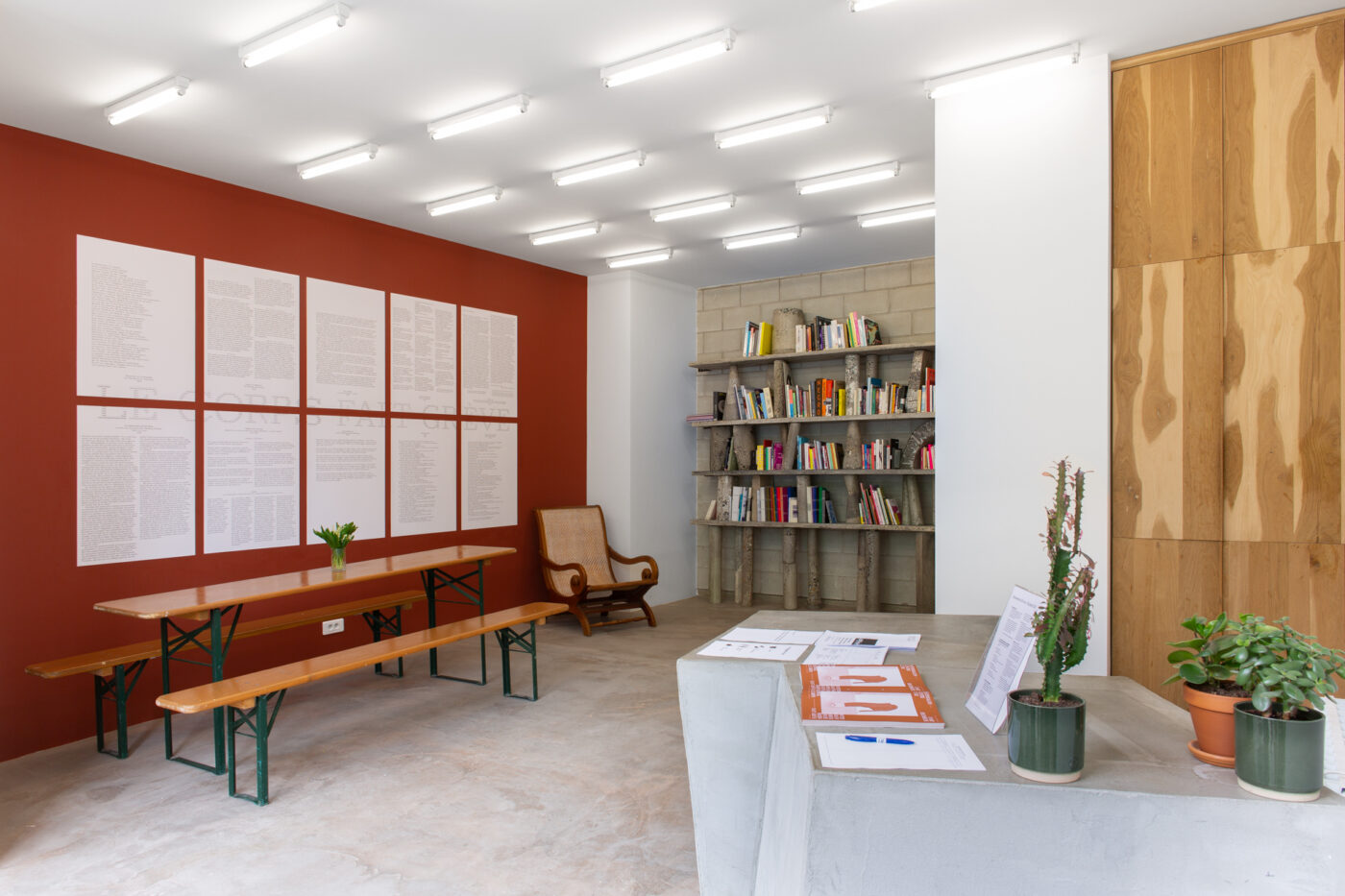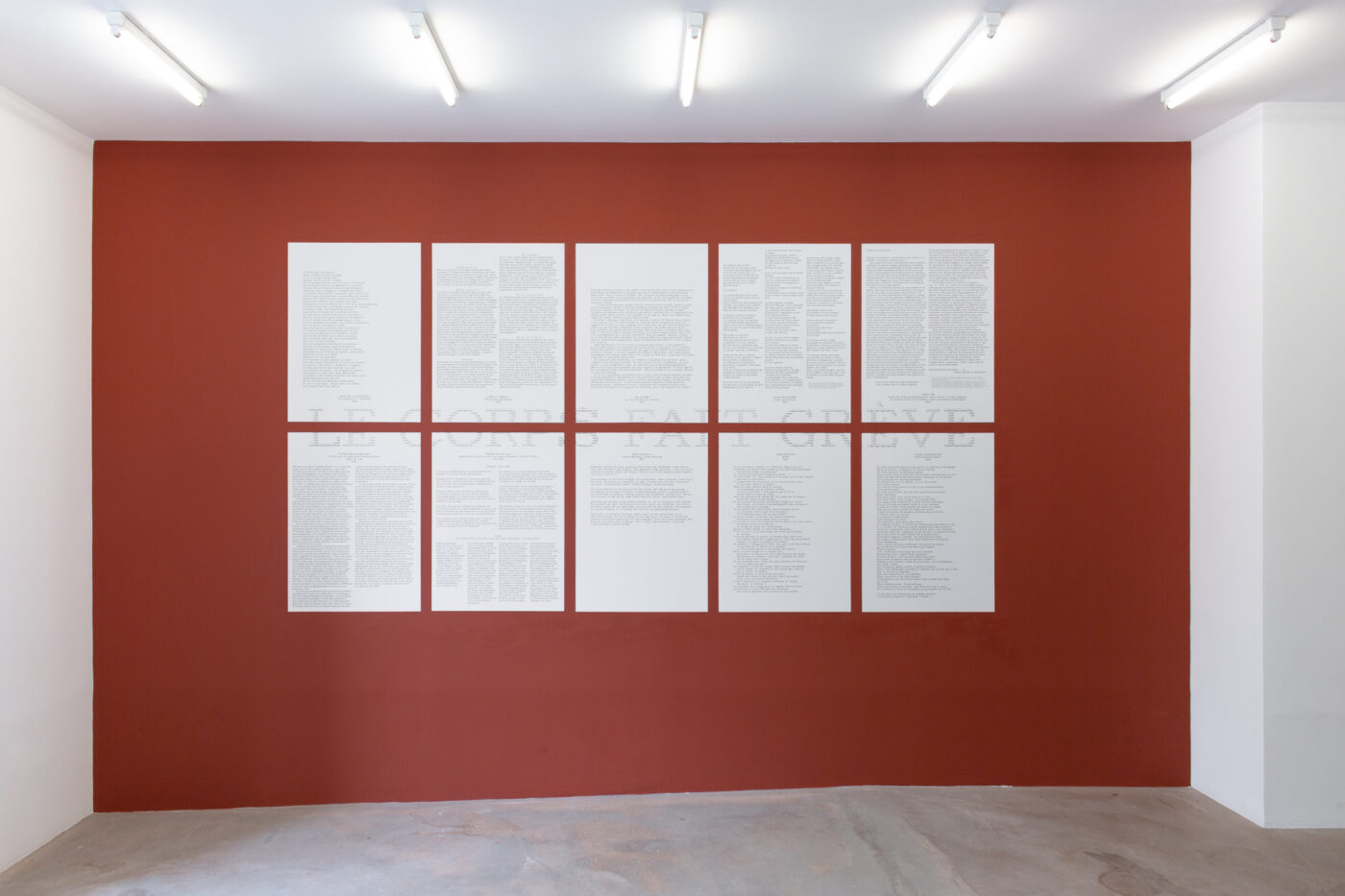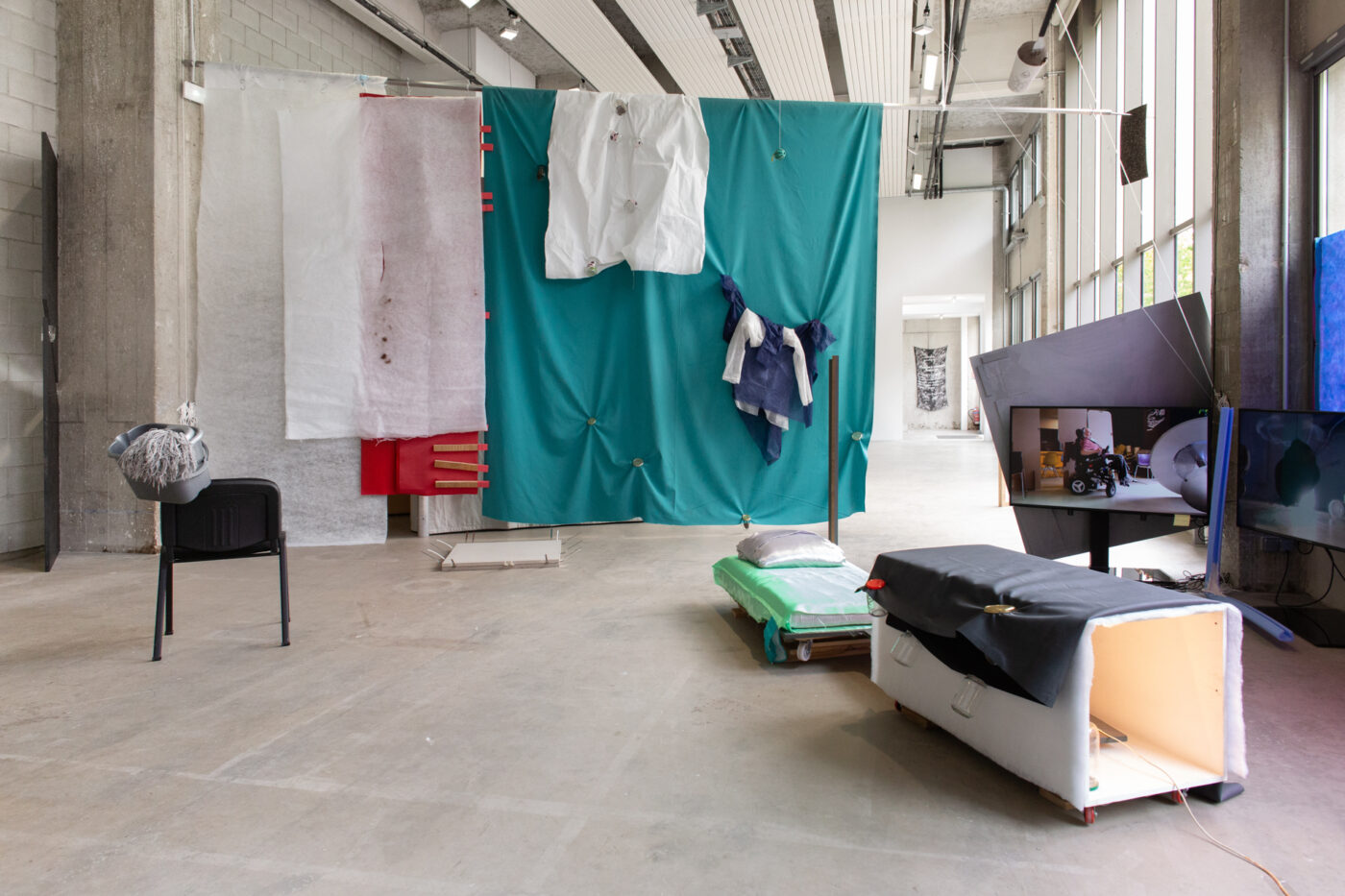
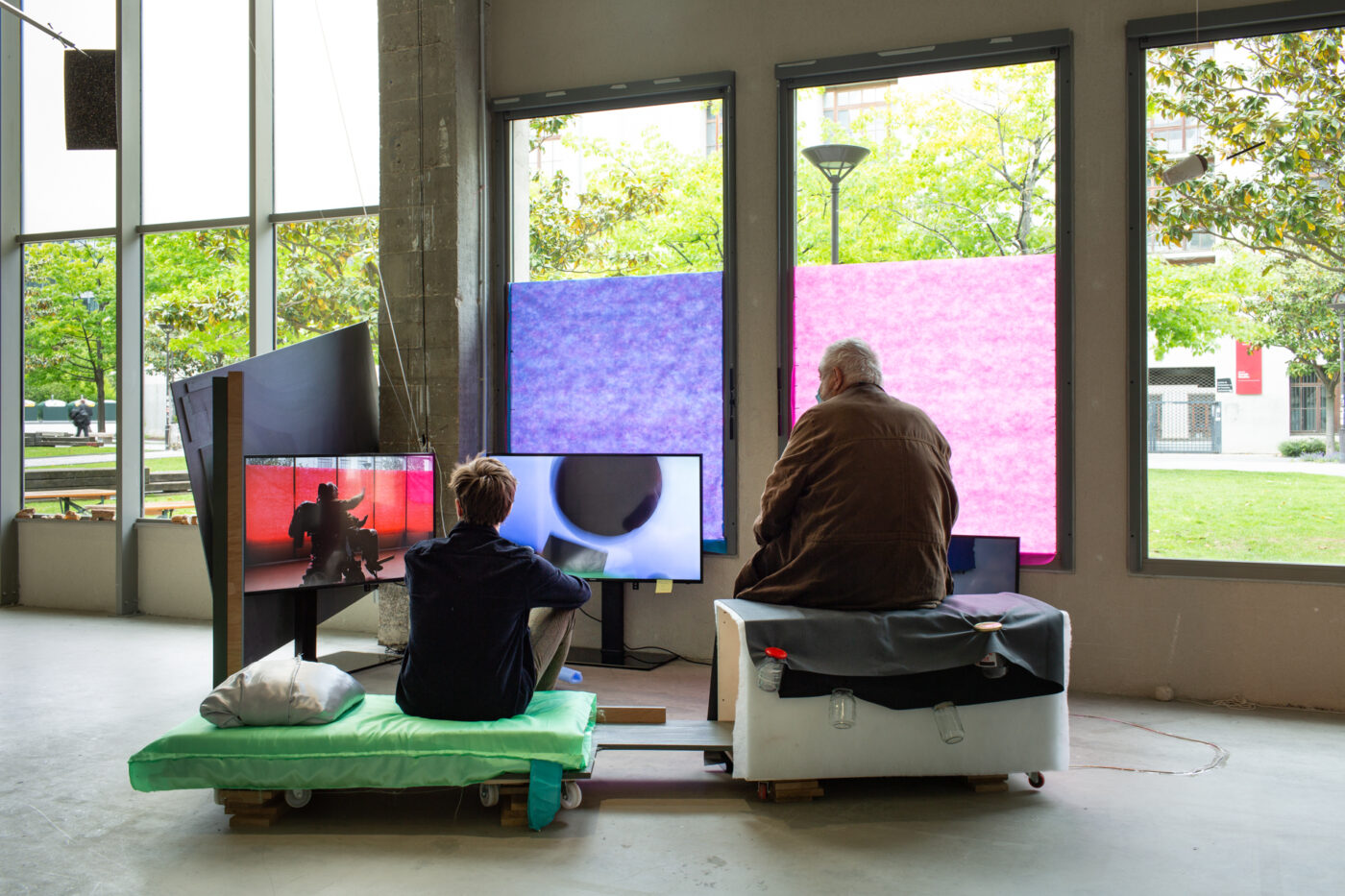
The body goes on strike
With Babi Badalov, Amie Barouh, Florian Fouché, Hedwig Houben
As a mutant virus clings to the pulmonary alveoli and slips unnoticed towards unknown mucus membranes, forcing bodies to keep a distance from one another, and as the State divides and separates us out according to obscure sanitary logics, a biological force reveals weaknesses, dependencies, and infinite reserves of patience. The ambient catastrophe of Covid forms the backdrop to this exhibition, which has taken shape over a painfully long year during which culture has been relegated to the regime of the non-essential.
This exhibition, the first in Émilie Renard’s programme at Bétonsalon, brings together works by four artists that centre on the experiences of bodies that are weakened, hindered, marginalized, or overexposed: a solitary body gathering proofs of its legitimate existence for a bureaucratic administration (Babi Badalov); an ambiguous character, Body, who settles into a comfortable sofa and a world of idiosyncratic pleasures, who retakes control of wandering thoughts and alternates between free association and concentration (Hedwig Houben); bodies that pivot around a tipping point between assisting and assisted (Florian Fouché); the bodies of lovers and friends animated by the presence of an unflinching videocamera that captures, moves and separates them (Amie Barouh). This exhibition proposes to observe the unexplored, devalued and dormant forms of experiential knowledge that fatigue, weariness, and exhaustion might yet disclose. Bringing together representations of bodies that are described, perceived or identified as vulnerable, it looks to amplify the faint signals of their power.
The title of this exhibition is inspired by a fable by La Fontaine, Les Membres et l’Estomac [King Gaster and the Members], first published in 1668. In the story, the hands, the legs, and the feet have grown tired of working. They meet, discuss their shared condition, and decide to simply stop feeding the stomach. The fable describes a dissociated body, caught in a class conflict between the worker-limbs and the internal organs ruled over by the stomach, King Gaster, whose governance and administrative and political functions soon turn out to be vital for the ‘kingdom’ of the body as a whole. The political turmoil and the health crisis that ensues are brought to a close when the striking limbs are reminded of their reciprocal engagements and the body becomes fully operational once more.
The body goes on strike sets out the hypothesis of a mobilized and engaged body deliberately disloyal to its rational and biological functions. In this, the exhibition’s title operates as a narrative fiction that precedes the experience of the works, gestures, words and texts of which it is composed, and opens up a space of speculation around a body struggling to free itself from the centrality of the stomach and the verticality of the head, a body uncoupled from its functionalism and open to the anthropolymorphous anatomies mutating within it.
Babi Badalov
Born in 1959 in Lerik (Azerbaïdjan), Babi Badalov lives and Works in Paris. His pratice is a constant exploration of the limits of the language. He is particularly interesting in the way that language is able to isolate individuals from the people who don’t share the same language. Thereby, the artist covers current geo-political topics that echoes his own personal experiences. Great traveler and poet himself, Babi Badalov often introduces his own texts in his work : by combinating it with manipulated political pictures, he creates installations, objects, paintings and happenings that he used to qualified as « visual poetry ». Several Babi Badalov’s artworks are part of international public collections such as FRAC Ile-de-France (France), FRAC Midi-Pyrénées les Abattoirs de Toulouse (France), Russian Museum in St. Petersburg (Russia), MuHKA Museum Contemporary Art Antwerp
(Belgium), Azerbaijan State Museum of Art in Baku (Azerbaïjan), Kunstmuseum of Emden (Germany), Martigny Art Museum (Switzerland), Oetcker Collection in Bielefeld (Germany), Arina Kowner Collection in Zurich (Switzerland) and Zimmerli Art Museum (New Jersey, USA).
Amie Barouh
Amie Barouh was born in Tokyo in 1993. She settled in Paris in 2011 and entered the Fine Arts School, where she studied in Clément Cogitore and Jean-Charles Hue’s classes. She then met a Roma man for the first time and learned to speak Romany alongside him. One day, a friend of hers offered her a camera for her to record a wedding, and it led her to a regular video practice from then on. I Can Change, but Not 100% is her first film.
Florian Fouché
Florian Fouché was born in 1983 in Lyon (France). He currently lives and worksin Paris. His sculpture practice evolves both through documentary forms (field investigation, photography, video, drawing) and “close actions”: La petite fille punie (2013), Dans le train Lyon-Bucarest (2013), Cabinet d’étude à propos du musée du Paysan roumain (2014), Le musée antidote (2012-2014), ASSASINS. L’atelier Brâncuși recomposé (2015), Hémiplégie (2015), Brâncuși juxtapoisons (2014-2018), Lumières pendues (2013), La plate-forme multimodale. Installation politique (2013-2014, avec Adrien Malcor et Antoine Yoseph), Transport en commun (2015), La chaise d’A.W. (2016), Pour La Ribot (2018), SAFFAdo (2018-2020), Manifeste Janmari (2019-2021). Since 2019, he’s been co-working in L’Arachnéen Editions’ studio at 10, rue Saint-Luc, with Sandra Alvarez de Toledo, Violette A and Anaïs Masson. He graduated the Fine Arts School in 2009, and has shown his works at the Palais de Tokyo, at l’Ensba, at the CAC Passerelle (Brest), at the Carré d’art (Nîmes), at the Unterlinden Museum (Colmar), at the CIAP (Vassivière), at the SKC (Belgrade), Eustache Kossakowski’s studio at Anka Ptaszkowska’s (Paris), at the Centre Pompidou (Metz), at the Moma (New York), at the Muzeum sztuki nowoczesnej (Varsovie)…
Hedwig Houben
Hedwig Houben (The Netherlands, 1983) lives and works in Brussels, Belgium. She was involved in many collective exhibitions and projects
including: SWEEP, TAP, SWOOOOOP (MHKA, Antwerp, 2019); You and I (Spike Island, Bristol, 2016); UnScene (Wiels, Brussels, 2015); Don’t You Know Who I Am? Art After Identity Politics (MHKA, Antwerp, 2014); and Six Possibilities for a Sculpture (La Loge, Brussels, 2013); The Hand, the Eye and It (1646, The Hague, 2013). She’s been taking part in a collective since 2019, alongside with Rob Leijdekkers and Brenda Tempelaar, that focuses on alternative exhibition models within the cultural field. She currently teaches in the “Art and Research department” of the St. Joost Academy, Breda, The Netherlands.
“Exhibition scene” by Julie Pellegrin, a lecture in the framework of “The anarchist body: anatomy of voluntary associations”, a series of lectures proposed by Julie Pellegrin
Workshop with artist Hélène Deléan.
For children between 7 and 12 years old.
Intergenerational workshops on modelling, from age 7, free.
Workshop with artist Hélène Deléan.
For children between 7 and 12 years old.
Workshop with artist Hélène Deléan.
For children between 7 and 12 years old.
Multiple materials, sculptures, videos
Coproduction: Centre national des arts plastiques (CNAP)
Photo : © Margot Montigny.
Multiple materials, sculptures, videos
Coproduction: Centre national des arts plastiques (CNAP)
Photo : © Margot Montigny.
Multiple materials, sculptures, videos
Coproduction: Centre national des arts plastiques (CNAP)
Photo : © Margot Montigny.
